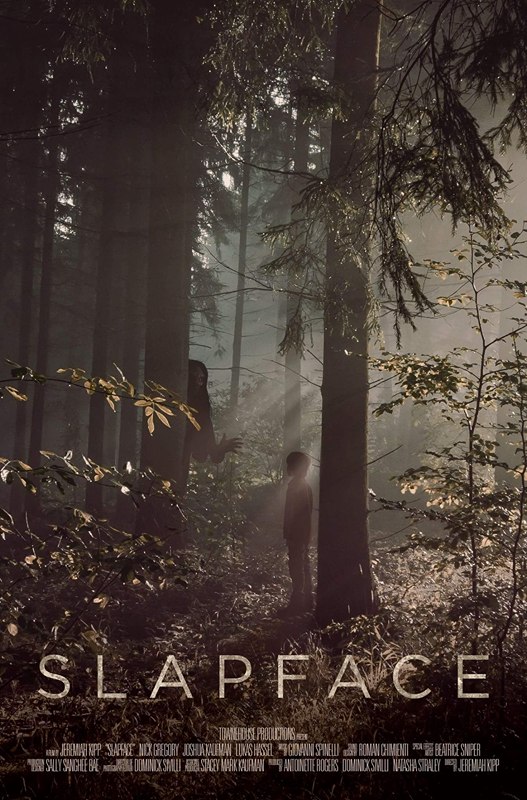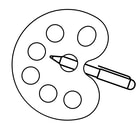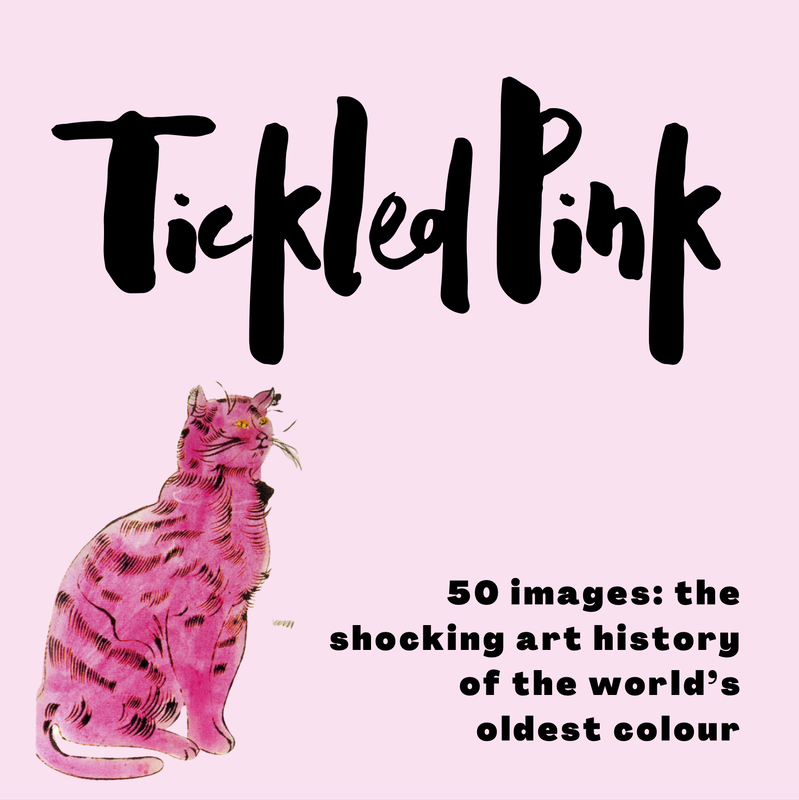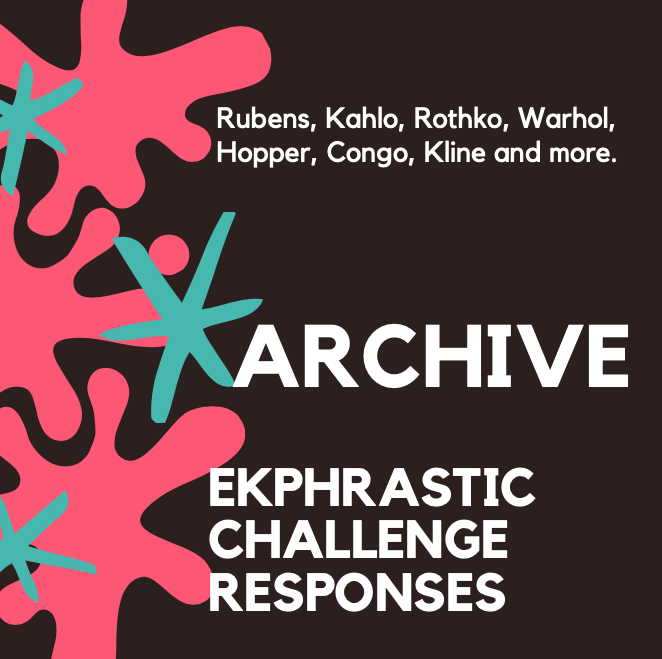|
Editor's Note: After seeing an exhibition of filmmaker Guillermo del Toro's art collection here in Toronto at the Art Gallery of Ontario, I was reminded of this interview I did with another horror filmmaker, Jeremiah Kipp. The original magazine where it was to appear unfortunately folded, so I decided to run it here, for Halloween, even though it's a few years old. Jeremiah generously agreed to answer a couple of new questions to update us on his recent work, and to comment on Guillermo del Toro. -Lorette The Beautiful Side of Evil The Devil is in the details, and filmmaker Jeremiah Kipp is hell bent on illuminating the exquisite minutiae of day-to-day humanity to reveal His hiding places. Perhaps this is the greatest strength in Kipp’s impressive repertoire of films: even in the most violent or operatic moments, he never loses his eye for the subtleties that reflect every nuance of our psyche. And that is where the Devil lurks, of course- the beast is within. Horror cinema is not usually a genre credited as an expression of profound insights and challenging erudition. It seldom merits even a sliver of critical reflection. Certainly, it’s not recognized as one of the higher forms of art. Yet what other genre contemplates so thoroughly man’s search for meaning? Where else do we find such intensive questioning of identity, of motivation, of the here and the hereafter? Where else do we face our fears as boldly? In what other genre of creativity have we ever explored so intimately and honestly our darkest, most hidden fantasies – or for that matter, our sick and sadistic secrets? Horror stands in as sublimation for primitive rituals and connects us with our savage, superstitious past. Horror films embody a form of mask making, often literally. They confront frankly the sinister spectre of death, the grisly thirst for blood or human flesh that still lurk vestigially in our populace. They reflect our risk-taking sides, our thrill in danger. They reflect our lingering fear of evil spirits, which still take the fall for human darkness even in an age of science. It is often still too painful to accept the ruthlessness of the animal kingdom, of the uncivilized ancestor, of the undomesticated us: hence, there must be some kind of diabolical, supernatural explanation for the ease with which our violence still surges up. Horror cinema conveniently covers all these bases while entertaining us. My view may not be popular in the ivory towers, but I would argue that horror follows in the footsteps of the great traditions of art and literature. Mozart, after all, was facing his own death and exorcising demons when he composed the music for the Requiem, one of the most chilling and sublime pieces of art in all of history. And Dante’s masterpiece trilogy, the Divine Comedy is terrifying and gruesome. There’s Frankenstein, Dracula, hell, even A Christmas Carol. The Bible itself is where horror gets its range of Biblical themes, of course- life, death, plagues, and rivers of blood. Classical mythology is nothing short of horror, with phantasms and violence and vampires and murder and betrayal and incest and festering diseases and incest and witches and demons and underworlds. Painting centered nearly exclusively on these themes from mythology and the Bible. Non-western art traditions included ritual death masks and role-playing through dance of countless demon spirits. Even opera and ballet were filled with evil, suicide and war. Perhaps horror filmmakers would rather I didn’t expound on the similarities between high art and the subterranean dungeons of terror films, lest we ruin the fun. Indeed, it is the subversive qualities that allow the audience to make so many concessions for the genre. We let horror movies get away with murder, at times, never demanding the calibre of acting or writing or costuming or production that we expect from other films. The raw quality is often its very appeal. We wouldn’t want to take our fears too seriously, now would we? Jeremiah Kipp has worked in every conceivable capacity of filmmaking, from critic and writer to producer to assistant director to cinematographer, to director. And he has a special knack for getting under our skin. While the work he’s done runs the gamut from slasher to zombie to cerebral thriller, there’s a beauty underlying much of his work that is unnerving to say the least. The seductive persuasion of darkness, the erotic undertow of pure surrender, the edge where disgust gives way to submission, are masterfully played out in films like Crestfallen, Drool, and Contact. Crestfallen can be criticized as an ideation of suicide, romanticizing the ultimate act of self-indulgence. With the muted colours, the soft gaze, the candlelit bath, we enter into an erotic world reminiscent of Damon Loble’s photography. There is indeed a kind of narcissism to the romance at this party of one. And it is true that suicide is not this pretty: it is ugly, so ugly. But what is also true is how honestly this reflects the fantasy. Sure, many dream of watching from afar while their family scours their brains off the garage wall, relishing dirty vengeance for neglect and defeat. But many also envision a misty, soft-porn-style act of exhibitionism, a night of tragic theatre in which they star, slipping away ethereal and naked. Soft sighing and gentle sobbing fill the earth as the absence becomes more real than the presence ever was. The end to pain in such fantasies must be painless itself; the final act in this kind of story must be beautiful to punctuate what beauty the others have given up, driving one to this end. Drool is a little different, featuring slippery bodies conjoining in a slithery dance on a wet floor. Perhaps Kipp does not care to know that the moist writhing sequences of the film summon, for me, the video for Madonna’s chirpy “Cherish” of the late ‘80s. That little video got the seventeen year old me all hot and bothered: the sight of a soaking wet Madonna cavorting with mermen in a pounding surf gave countless encounters with carnal self-bliss to a chaste Baptist teenager. How cheerful, how wholesome, was this maddeningly sexy prancing mascarpone! Drool does not take place under a warm Malibu sun, however, but in a bleak and frosty expanse of grey Kafkaesque nothingness. Indeed, the stark setting and the bewilderment and humiliation that one senses summon the sparsest scenes of Orson Welles’s The Trial. The central glue to this film is, for me, the intersection of erotic beauty and abject revulsion. Curiously, I would find the content only beautiful if it were entitled Water or Acrylic Gloss Gel Medium- the repugnance is in the saliva. Why do I find bodily fluids like drool disgusting? I’m not alone. Kipp doesn’t answer the question. Instead, he entices and excites you with your own aversion, then leaves you in a puddle in an arctic desert, used, sick, and alone. Kipp charges his films with visual and psychological depth. It is the crafting of the details that makes a difference. In Contact, for example, a critically acclaimed short, so much of the story is told outside of the actual narrative. For example, the way the parents fuss over the table setting while anxiously awaiting their visitor reveals even more than do their facial expressions or actions. Kipp also uses details like angles and quality of light or sound as pattern and texture to seamlessly move the scenes of the film one to another. The result, again, is that strange interplay of beauty and darkness. Are we really so easily seduced away from reason and judgement? I decide to ask Jonathan Kipp a few questions. Lorette C. Luzajic: Your work in Drool, Contact, and Crestfallen explores the fine line between erotic beauty and ugly revulsion. Is this conscious, or a consequence of another objective? Jeremiah Kipp: I’m not sure whether it’s conscious or unconscious. Contact emerged from a painting—Edvard Munch’s “The Kiss,” where you see a couple with their faces melting into one another. The painting is both sensual and macabre. But I wasn’t working from that result- it was more a process of building a film that reaches that scene, wondering how the characters reach that peak moment of beauty and revulsion. Crestfallen was written by a colleague, Russ Penning, who based the narrative on his life—and the darkest moment where he was close to death. But the suicide ritual has order: it is in a bathtub of steaming water; there is an operatic quality to it because love and sorrow are large emotions, and we feel them in a large way. Why not treat it as such? Drool was an experimental film that emerged from the subconscious, through the physical work of the actors. In retrospect, we were exploring addiction, relationships, and the bodies are beautiful and repulsive at the same time, yes. I don’t theorize about it, but you must be on to something with your question. These things are important to me. LCL: As a film critic, how would you respond to your own films? What would you say about them if they were assigned to you at Slant or elsewhere? JK: Being a film critic was a rewarding experience. It allowed me the opportunity to see some wonderful movies (sometimes not so wonderful), and the process of writing about them expanded my awareness of what’s possible in cinema. It’s an art form unto itself, but analyzing and critiquing films is not the same as making them. As a critic, you’re an objective source responding to material, and it would be impossible for me to judge my own work in this way. I’m profoundly grateful when critics review my work, and feel like I can learn something new about the project when someone writes about it in a perceptive and honest way. LCL: You’ve worked in every aspect of film and video production, but left to your own devices, you continually gravitate to horror. Why is the appeal so strong for you? JK: Someone once asked my friend, film director Larry Fessenden, why he keeps making these horror movies, and to paraphrase his answer, he replied: “What makes you think I have a choice?” It’s not that he chose horror; it’s that horror chose him. But what’s been continually weird for me as I navigate this thing called a career is how my genre films seem to straddle a line between “horror and surrealism” or “horror and drama.” I really love how some artists like photographer Gregory Crewdson or fashion designer Alexander McQueen would take elements of the horror genre and incorporate that into their work—does that make McQueen a “horror” fashion designer? I think the appeal is that horror broadens the possibilities; it can be metaphoric. LCL: You recently told an interviewer that your advice to young filmmakers is “Don’t do it.” You said the lifestyle is too hard, and you have to “surrender your life to it.” What kind of sacrifices have you made in order to make films? What kind of person is cut out for this surrender? JK: I’ve met unique people who have chosen the life of a filmmaker, and no two of them are alike. The ones I’ve seen who inspire me have a kind of toughness on the outside, since they’re protecting a talent on the inside that is so vulnerable, so personal, so expressive. That gift must be protected at all costs. As for my own sacrifices, it’s a constant battle to navigate one’s finances, one’s personal life, friendships, since there are times when there is absolutely no work and therefore no income, and other times when you’re working every day and sleeping very little. And that’s before you set foot on a movie set, where you are confronted by a battery of problems every day, and have to discover the opportunity within that mistake. Sometimes great creativity can result from that; but sometimes it leads to a meltdown, depending on the artist. I used to think some directors were real jerks when they would blow their tops; now I realize every filmmaker I’ve ever worked with (including myself) has lost it at some point during principal photography because the pressure is enormous. I’ve loved moviemaking as an art and craft ever since I was a child; that love is as great as when you’re in love with your partner—I love her with all her flaws, and she loves me with all of mine. LCL: As the legend goes, it all began with the young filmmaker making zombie movies in the backyard. Can you share some of the inspirations and stories of these early awakenings? JK: I remember feeling as if I had come home. It’s amazing to discover what you want to do for the rest of your life at age twelve. Before that, I took great joy from writing and drawing. My grandfather often read to me, introduced me to art and photography—and then because I loved going to the movies I became a child actor for a bit. When my grandparents purchased a cheap VHS camcorder, suddenly I had a medium that combined art, storytelling, performance, and the logical next step was to gather all my friends from the neighborhood, put them in cheap makeup, and film a story of zombies attacking the house. It’s probably because I loved Dawn of the Dead as a little boy. And as I continued to grow, the stories grew more ambitious. We did a three-hour adaptation of Stephen King’s The Stand (years before Mick Garris did his made-for-TV version), a bio-pic of Vincent van Gogh, a miscellany of projects based on whatever movie I felt like ripping off at the time. But it got me going, it got my dreams going… LCL: What is it about horror and terror that keeps us coming back for more? Why are we so drawn to films about blood, ghosts, vampires, cannibals, monsters, and murderers? JK: When George Romero placed zombies in a shopping mall in Dawn of the Dead or David Cronenberg had James Woods shove his face into an amorphous television set in Videodrome, they tap into something powerful and honest. The Texas Chainsaw Massacre and Last House on the Left are perhaps more accurate depictions of those times they were made than most of the naturalistic dramas of that era. You can make a movie about a loved one dying of cancer, or you could disguise it in metaphor and make it about transforming into a giant fly. Somehow, this mask allows the project to be an even more emotional experience than it would be otherwise. We’re all afraid of dying, afraid of the death of a loved one, afraid of pain; these feelings are universal. And also, hey, it’s fun to be scared; watching a horror movie is safe. Real life is less so. LCL: The horror genre spans the gamut from cerebral and creepy to full on bloodbath. Can you share what kind of ideas and effects you are most interested in pursuing, and why? JK: I think the work I’ve done so far is usually a fear of something happening to the body, of losing control of it somehow. My first feature film, The Sadist, was a straight up B-movie about a killer in the woods. That was a job I was hired to direct. I’m interested in all different aspects of the genre. LCL: The short film is too often underrated, unseen, and considered a “stepping stone” as directors, actors, etc await budget and opportunity for a feature length movie. I’m not a filmmaker, but I personally feel that short films have a flexibility as an art form that allows greater exploration and experimentation- that their limitation liberates them from the expectations pinned on feature cinema. Unfortunately, they tend to be a niche interest and aren’t promoted to a wide audience. How do you feel about short films in their own right? What would you do differently in a feature length film? Do you have plans for full-length work? JK: I do have plans to make more feature films. As for the short form, I wish there were more opportunities to get them out there. Authors like Raymond Carver and James Thurber could make a living writing and publishing short stories; but filmmakers cannot make a living doing just short films. I wish that were not so, because there’s a kind of compact poetry to the short that I love. It’s the same structure Edgar Allan Poe or H.P. Lovecraft worked in, a story of tension that builds to a singular moment. The shorts I’ve made did lead to me getting hired on various commercials, they led to my first feature, they led to work-for-hire jobs directing footage for film trailers, and indeed led to paid jobs directing other short films. I’ve been able to carve out a living as a paid, working filmmaker, paying the rent on jobs where I am directing. In that sense, for the past two years I have been living the dream I’ve had for myself ever since I was a child. LCL: Much horror is notoriously and unapologetically “b movie.” The audience often relishes the worst or most unconvincing in dialogue, plot, cinematography, and production, making some of the lousiest films of all time cult classics. What’s the appeal here? Why are the worst horror films often the most fun? JK: Maybe because they’re fun to watch. B-movies have no obligation to be high art, which in a way sets them free, makes them more unique in a way. I’ve always had an affection for the B-movies, or even the A-movies that are really B-movies in disguise such as The Fast and the Furious, or Taken. Those are drive-in movies underneath their glossy sheen. LCL: On the other hand, other works in terror cinema are finely tuned to aesthetics and the razor sharp study of human psychology, making them fiercely intelligent works of art. The works I’ve seen of yours lean more towards this category. Are there examples of horror films that were particularly inspiring and exemplary to you? What makes a horror movie a masterpiece? JK: The horror movies that are masterpieces to me usually are the ones that tell strong stories with dimensional characters, and feature unique situations. In their own ways, Invasions of the Body Snatchers, The Fly, and The Exorcist are compelling dramatic stories with a supernatural twist. Those films also emotionally involve the viewer. Those are just three examples of the many classic genre films that defined my childhood. I also like George Romero’s Martin, which feels like a personal film, almost like reading someone’s diary. LCL: What are you working on now? JK: I just shot a series of short narrative films for a NYC-based producer named Jenny Joslin, am in post on a few work-for-hire directing assignments, and am wrapping up a commercial for a European watch company. It’s been a busy time. In April, I’m directing another dark tale called The Days God Slept, written by a talented playwright named Joe Fiorillo. He describes it as a “cinematic prayer” since the main character is burdened by Catholic guilt, and it’s set in a mysterious strip club that may or may not be in our reality. Imagine if Charles Bukowski, Philip K. Dick and Graham Greene met at a bar and wrote a love poem together on a cocktail napkin—that’s the tone of this unusual film. It stars Lauren Fox, who was in Darren Aronofsky’s debut film PI. I’m looking forward to our work together. additional questions from 2017: LCL: Tell me about your new film. In what ways does it continue your favourite areas of inquiry? In what ways is it a departure? JK: SLAPFACE is different in that I wrote it, which perhaps makes it more personal. I grew up in the woods like my young protagonist and liked imagining creatures in the woods as relief from the much more frightening real world. But we make the same films over and over again, and once more it is distorted characters searching for love and connection in an alienating world. I believe both that love is the most important thing there is and that human beings are complex and dangerous animals. LCL: In what ways, if any, has Guillermo de Toro influenced your thinking? JK: I have never met him, but love his fascination with horror. Even more than his films, and I really like PAN'S LABYRINTH, I appreciate his perspective. I adore his story about being a child scared of the monster under his bed. He whispered into the dark "If you let me cross to my doorway, I promise I'll be your friend forever." There's so much to embrace in this memory he shares. Jeremiah Kipp’s IMDB page http://www.imdb.com/name/nm0456031/ Slapface http://www.imdb.com/title/tt6290116/ Drool http://vimeo.com/33438309 Crestfallen http://vimeo.com/20785570 Contact http://vimeo.com/16334767 Easy Prey http://vimeo.com/35222774 The Sadist https://letterboxd.com/film/the-sadist-2015/
0 Comments
Your comment will be posted after it is approved.
Leave a Reply. |
The Ekphrastic Review
COOKIES/PRIVACY
This site uses cookies to deliver your best navigation experience this time and next. Continuing here means you consent to cookies. Thank you. Join us on Facebook:
Tickled Pink Contest
April 2024
|




